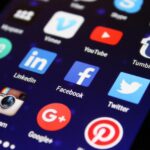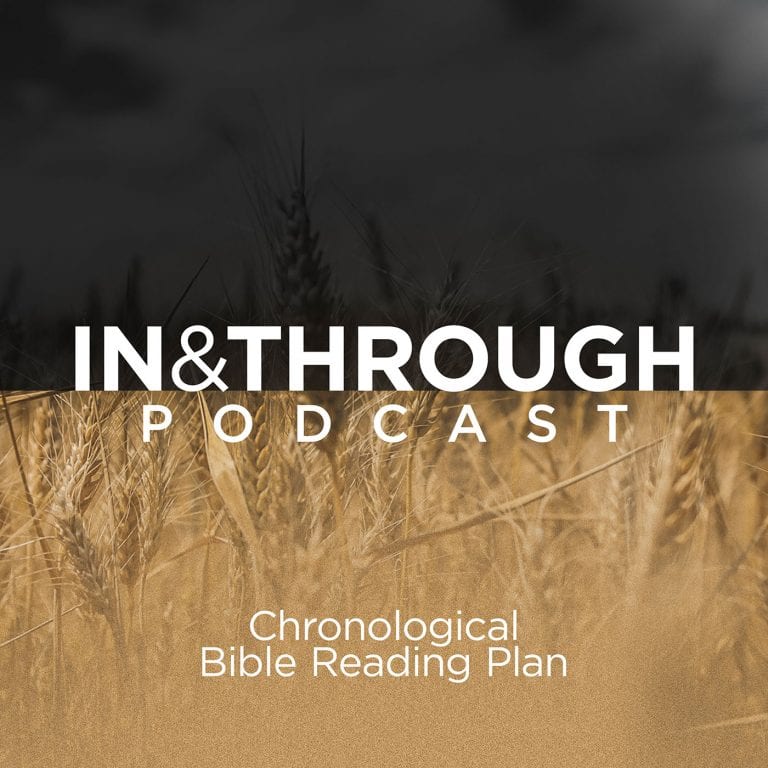A bit embarrassingly, we have two kinds of pew Bibles at our church.
I didn’t realize this until one of our preachers began telling us which page numbers to turn to each week. Yes, numbers.
For Psalm 91, turn to either page 512 or 593. The page numbers are also on the PowerPoint screen.
Why do our preachers and volunteers go through this when everyone has a smartphone in their pocket? Why can’t we just be told to pull out our devices?
It isn’t sinful to use your smartphone to look at the Bible passage on Sunday, but it isn’t best. The medium shapes the message. Three metaphors have helped me see the benefit of physical Bibles and the burdens of screens.
Sticky Notes
Imagine you want to tell your spouse you love them. You could do this face-to-face, even with a hug, but they are away at work. You decide to either send them a text message or write the same words on a sticky note and place it on a mirror. Which would you choose?
Intuitively, we recognize the physical note is more meaningful and personal. It is your handwriting, your words (no autocomplete).
We can’t read God’s handwriting today (only Moses did that, alongside the few who witnessed Jesus’ finger in the sand), but we can choose to read God’s Word in a more tangible form.
Seeing words on paper has a physicality that reminds us of their reality; God wrote a book for us. A screen is ephemeral and made for efficiency. The heaviness of a Bible is, well, more weighty.
In Reader, Come Home, Maryanne Wolf demonstrates the neuro-cognitive benefits of print reading versus screen reading. Her research shows that a physical book helps readers better follow a narrative and it stimulates more areas in the brain.[1]
In other words, a text is easier to grasp when it’s graspable. And it’s more meaningful when it can’t be swiped away. That’s likely why Moses told the people to write Scripture on doorposts and gates (Deut. 6:9). A physical Word is better than a screen in the same way a sticky note is better than a text message.
Swiss Army Knife
I remember when I was in Pioneer Clubs as a kid and I finally received what my older brothers had for years: a Swiss Army knife. I remember opening and closing each of the parts for months. It was so cool!
Bible apps come with all sorts of features. The YouVersion Bible App sends pop-ups, such as: “Struggling With Prayer? Try this seven-day reading plan.”
Likewise, the app from Logos Bible Software has advanced search, Greek language tools, and you can highlight the digital text in fifty-three different styles. Pretty cool, eh?
At some point, you realize the extra features can be distracting. My smartphone, by its very nature, reminds me of mindless videos, social media controversies, and unanswered emails. Screens can be like a Swiss Army knife at a meal. The extra features distract from what’s important.
If you’re about to eat some steak, I don’t want a mini screwdriver getting in the way. There’s a time and place for such tools. But not the dinner table.
As we grow in wisdom and media literacy, learning how different media habits shape our soul, we realize two things: 1) It’s not a big deal if you use an iPhone Bible App at church, and 2) There are good reasons to prefer a different medium.
In order of preference, I think it’s best to bring your own personal Bible to church. If not, then use a “Pew Bible.” Otherwise, listen intently to the word as it is spoken (human flesh is the primary means God uses to communicate his Word, as per Alastair Roberts). At last resort, in some cases, use a screen.
That said, in some unique cases, a screen is helpful; if English is not your native language, you can use Google Translate to follow the sermon. Regardless, consider the pros and cons. Which brings me to my favourite metaphor. It’s time for dessert.
Home-made Apple Pie
Having your own physical Bible with you in church is like eating homemade apple pie. A personal Bible is a physical reminder of God’s faithfulness in your life, through all your highlighting times of meditation and hard times with coffee mug stains.
Apple pie hits the spot. It warms the soul. It breeds familiarity and trust, as you savour it with a scoop of ice cream. As you age, the page edges may be crinkled and the style out of date — it certainly isn’t symmetrical or glossy — but isn’t that what makes it special?
When you buy a dessert from a store, you purchase a product created to meet market demand. When you receive a homemade apple pie, you taste a sensory-rich reminder of someone’s love for you.
Enjoy your personal Bible each Sunday just as you enjoy homemade apple pie. In doing this, you remind yourself not only of God’s Word, but that God’s Word is for you.
Over-personalization?
Each of these three metaphors helps, but none is perfect. I may be overstating the need for “personal” Bibles. When each person has their own Bible, it can lead to a sense that we each have our own personal interpretation, rather than a shared Word from the one Lord.
Bibles can function like headphones, isolating us from one another. This is an additional metaphor which must be kept in mind. The technology of the printed Bible has its pros and cons, as John Dyer showed in his research on how Christians use of physical and digital Bibles.[2]
Dyer discovered a favourite version for Christians: the NAB. It’s more popular than you think! It’s the “Nearest Available Bible.” It’s funny, but it’s also sad. If the Sunday gathering is one of the most important aspects of your life (and it is), then why wouldn’t you spend a few minutes to prepare?
I am thankful for our church’s encouragement to use pew Bibles. I’m thankful for the physical Scriptures, just as I am thankful for sticky notes, steak knives, and homemade apple pie.
[1] See Wolf, Maryanne. “Reader, come home: The reading brain in a digital world.” (2018). Similar research has also been completed on physical Bibles verse digital Bibles by John Dyer in his book “People of the Screen.”
[2] You can read a summary of Dyer’s research findings in this article for Christianity Today: Bible Apps Are the New Printing Press. I spoke to him about his book, People of the Screen, on my podcast.
























